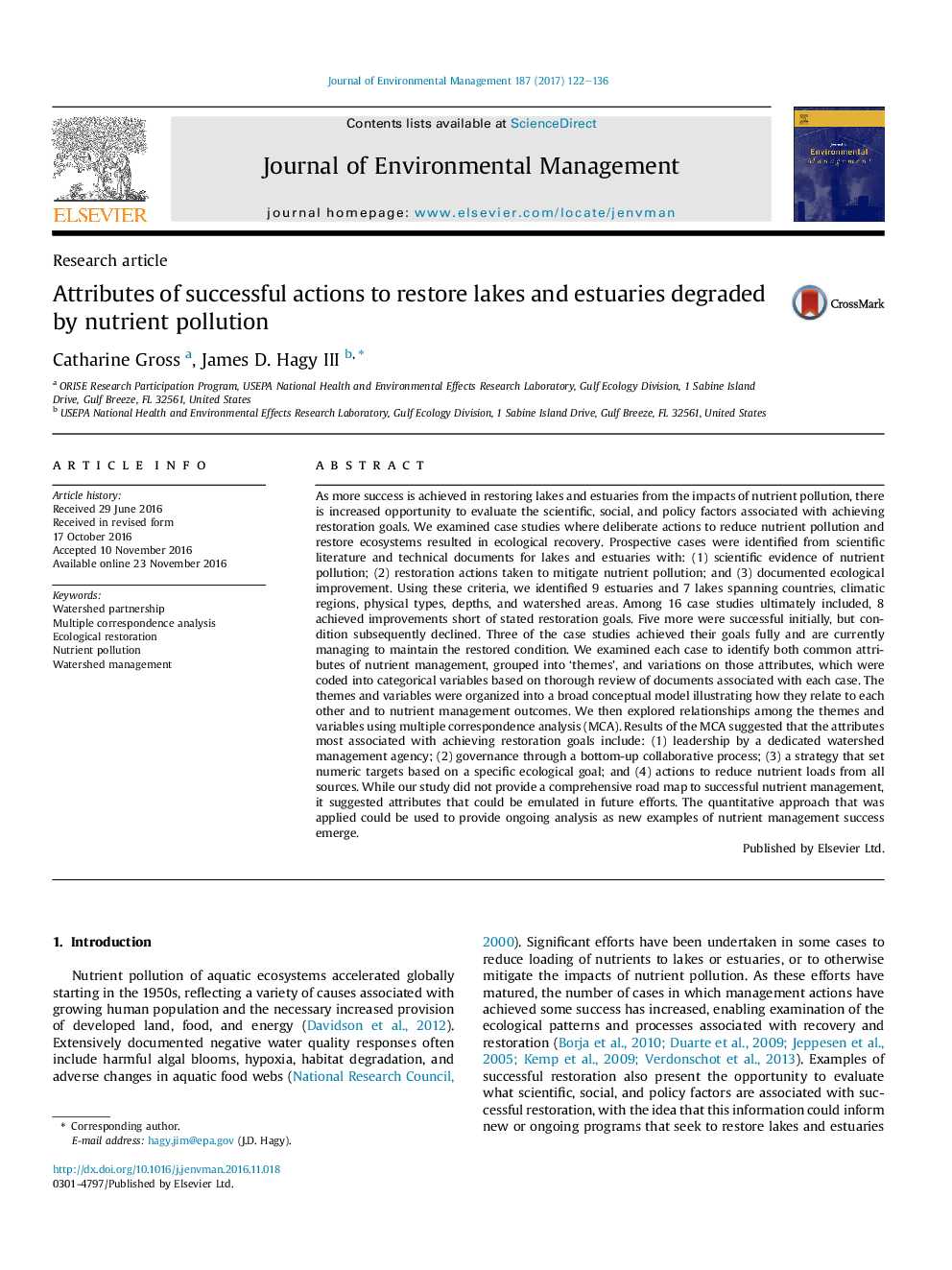| کد مقاله | کد نشریه | سال انتشار | مقاله انگلیسی | نسخه تمام متن |
|---|---|---|---|---|
| 5117362 | 1485228 | 2017 | 15 صفحه PDF | دانلود رایگان |
- We examined case studies of successful nutrient management.
- In some cases, restoration was only partial, or was later reversed.
- Policy attributes were analyzed using multiple correspondence analysis.
- Full restoration success was associated with specific policy attributes.
- Variations in leadership, governance, strategy, and actions were most significant.
As more success is achieved in restoring lakes and estuaries from the impacts of nutrient pollution, there is increased opportunity to evaluate the scientific, social, and policy factors associated with achieving restoration goals. We examined case studies where deliberate actions to reduce nutrient pollution and restore ecosystems resulted in ecological recovery. Prospective cases were identified from scientific literature and technical documents for lakes and estuaries with: (1) scientific evidence of nutrient pollution; (2) restoration actions taken to mitigate nutrient pollution; and (3) documented ecological improvement. Using these criteria, we identified 9 estuaries and 7 lakes spanning countries, climatic regions, physical types, depths, and watershed areas. Among 16 case studies ultimately included, 8 achieved improvements short of stated restoration goals. Five more were successful initially, but condition subsequently declined. Three of the case studies achieved their goals fully and are currently managing to maintain the restored condition. We examined each case to identify both common attributes of nutrient management, grouped into 'themes', and variations on those attributes, which were coded into categorical variables based on thorough review of documents associated with each case. The themes and variables were organized into a broad conceptual model illustrating how they relate to each other and to nutrient management outcomes. We then explored relationships among the themes and variables using multiple correspondence analysis (MCA). Results of the MCA suggested that the attributes most associated with achieving restoration goals include: (1) leadership by a dedicated watershed management agency; (2) governance through a bottom-up collaborative process; (3) a strategy that set numeric targets based on a specific ecological goal; and (4) actions to reduce nutrient loads from all sources. While our study did not provide a comprehensive road map to successful nutrient management, it suggested attributes that could be emulated in future efforts. The quantitative approach that was applied could be used to provide ongoing analysis as new examples of nutrient management success emerge.
551
Journal: Journal of Environmental Management - Volume 187, 1 February 2017, Pages 122-136
